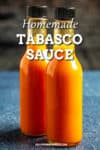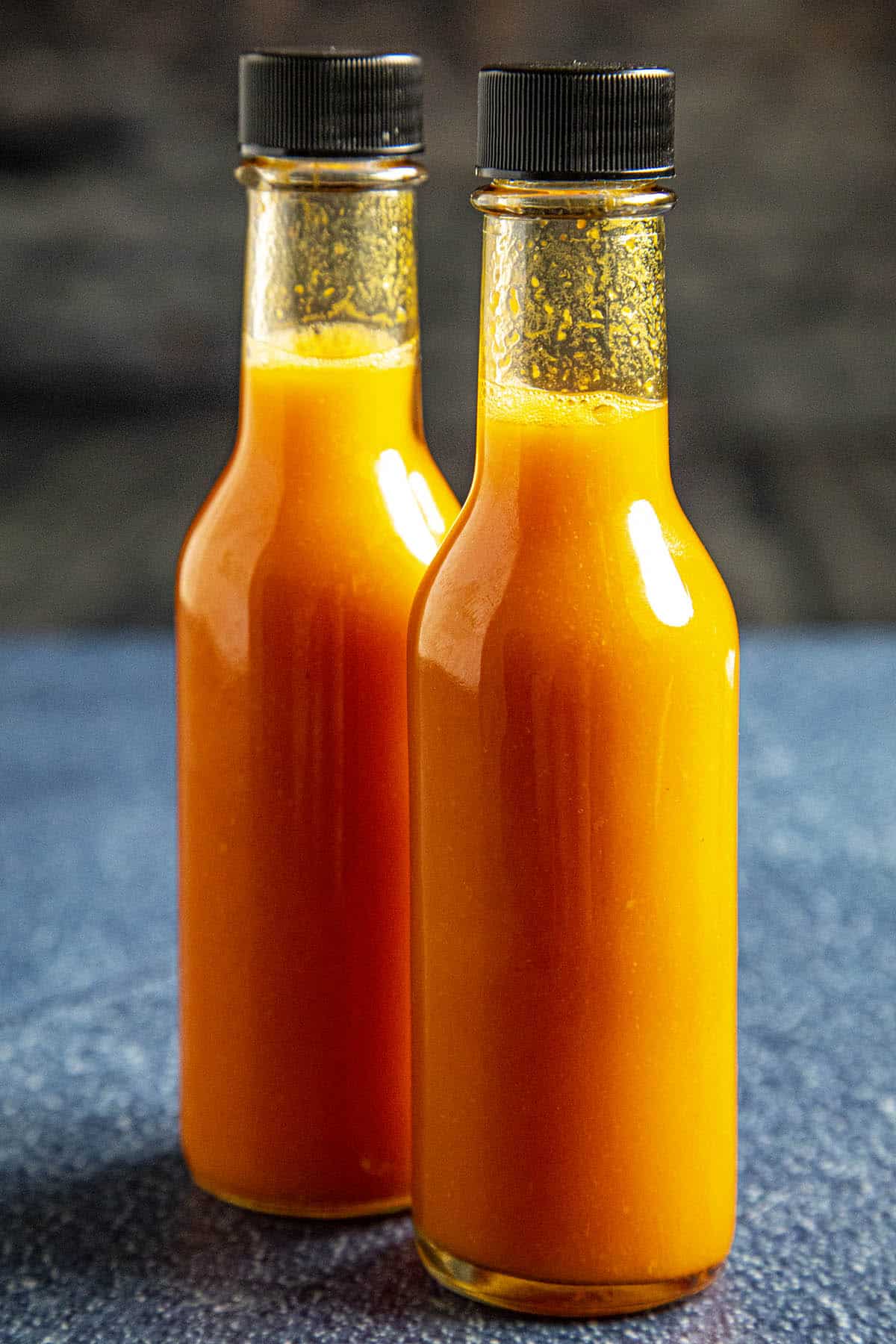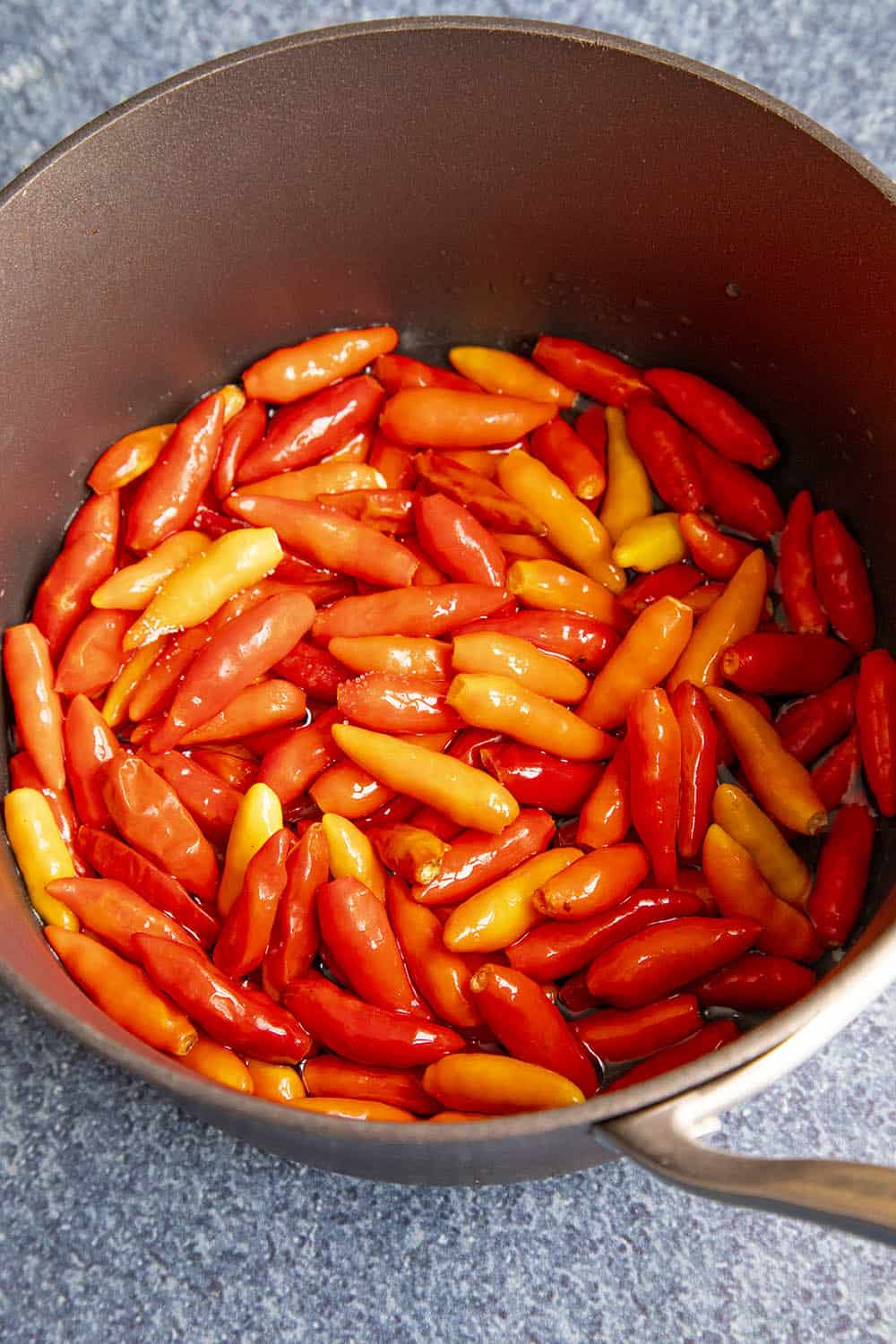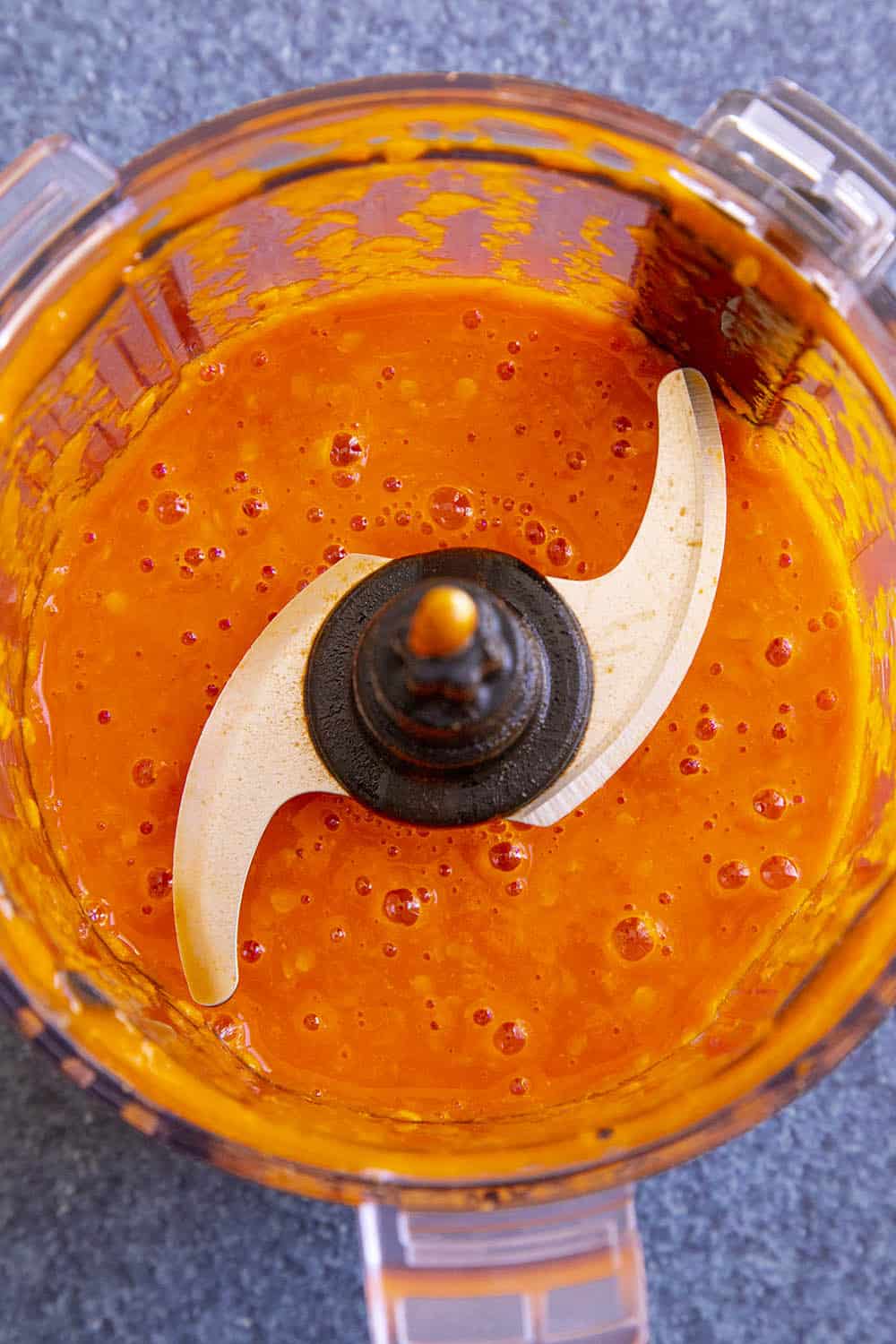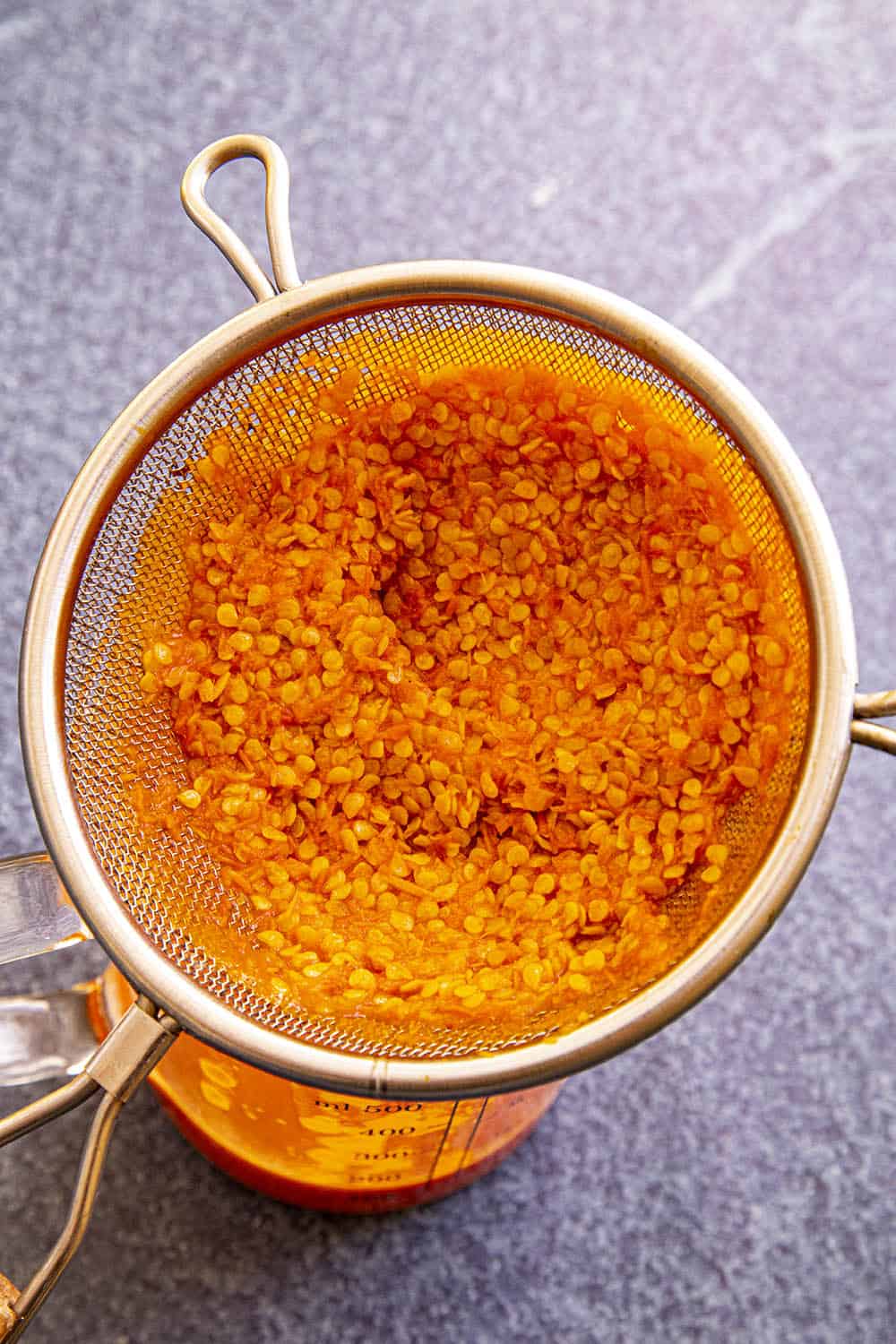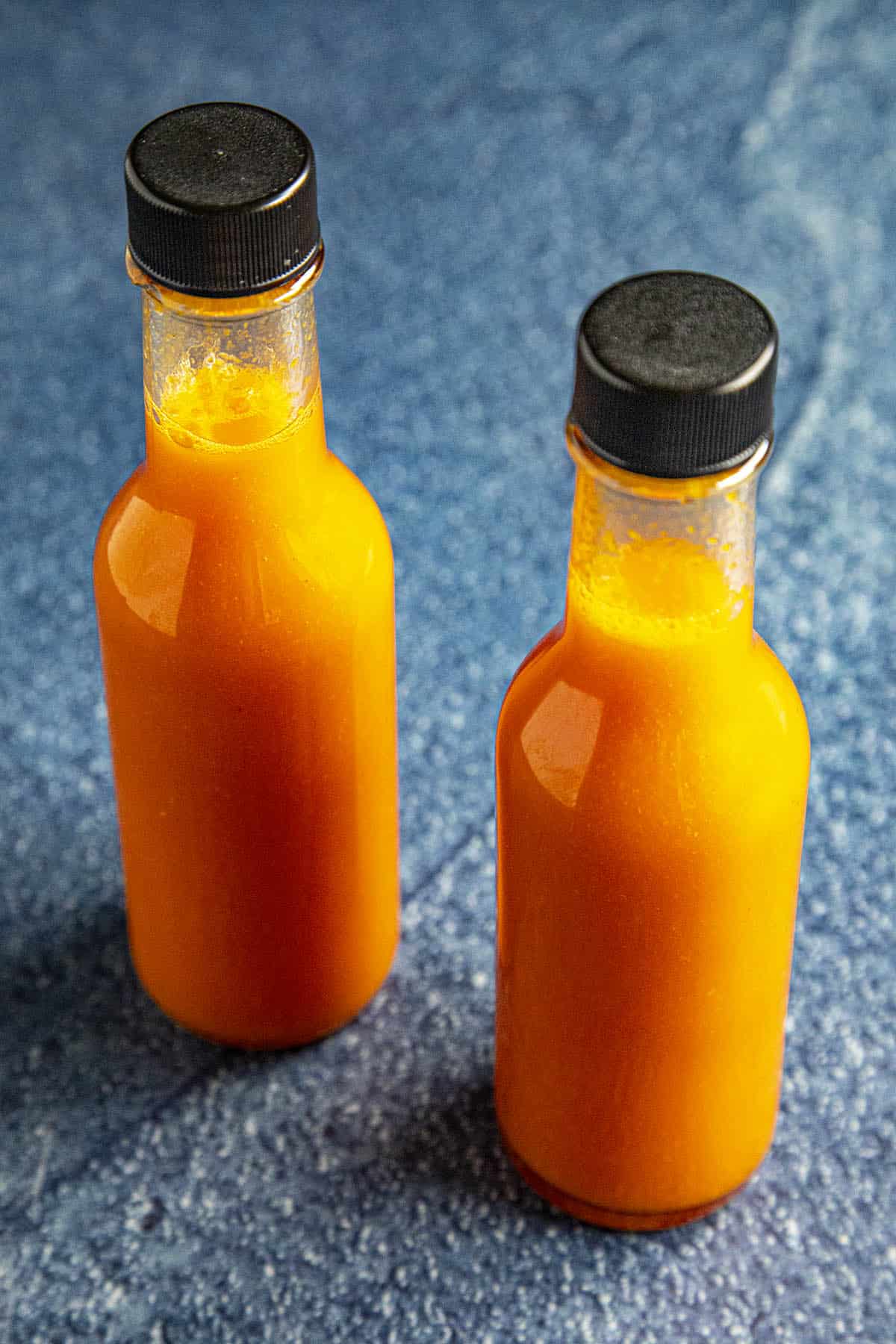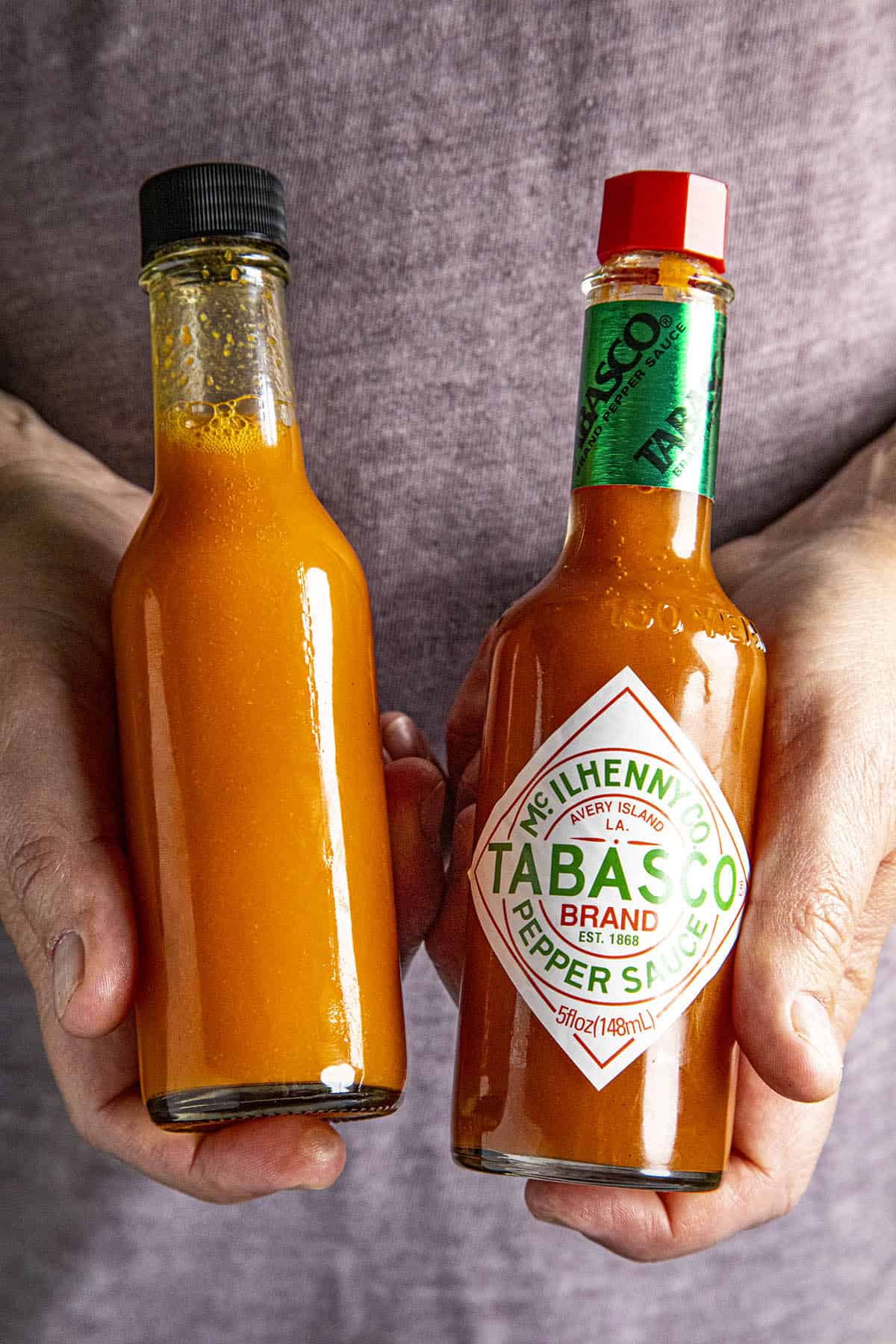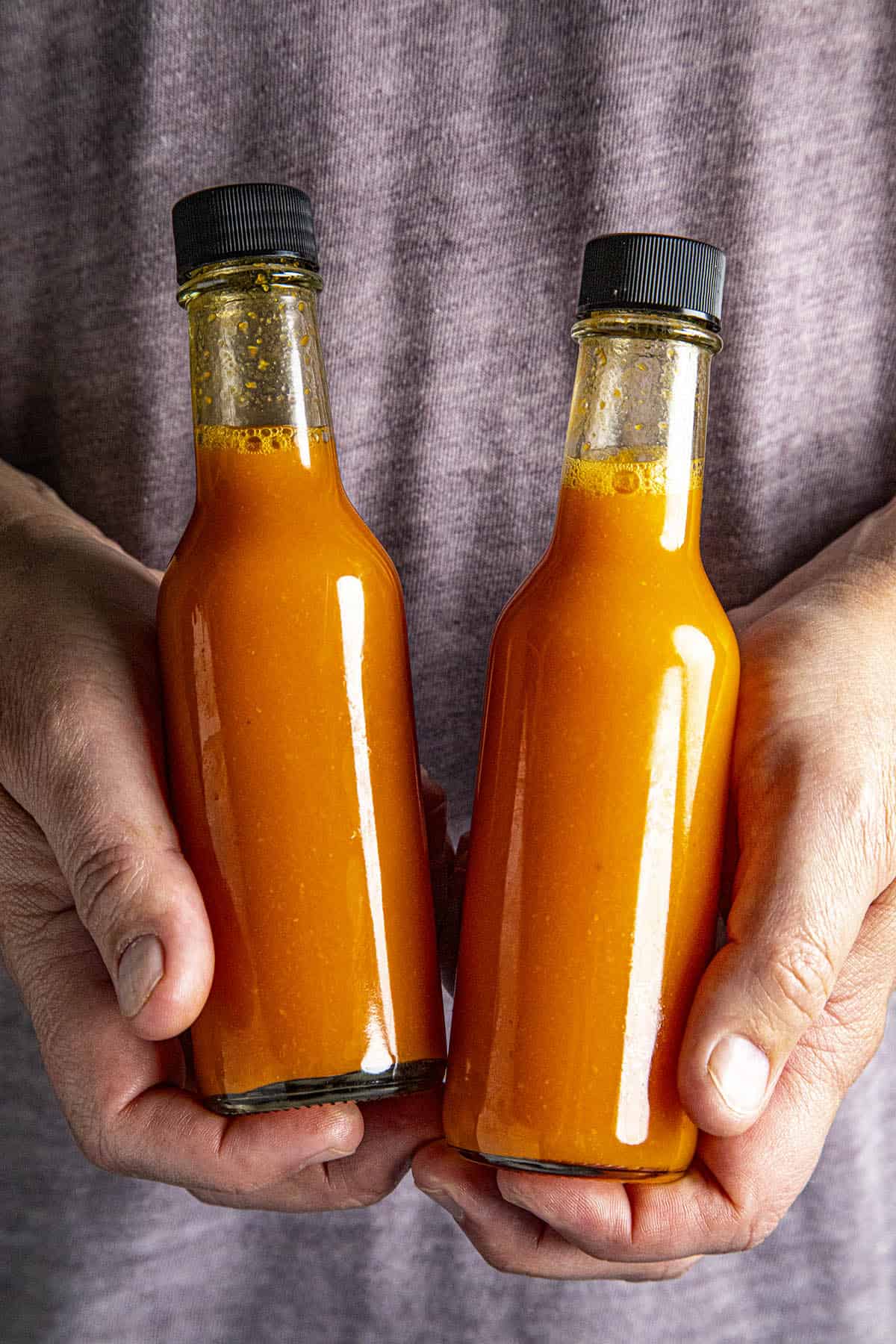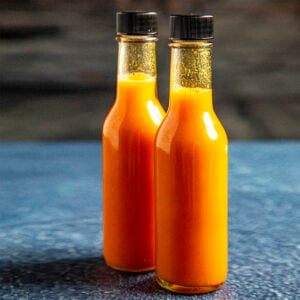Got any questions? Ask away! I’m happy to help. If you enjoy this recipe, I hope you’ll leave a comment with some STARS. Also, please share it on social media. Don’t forget to tag us at #ChiliPepperMadness. I’ll be sure to share! Thanks! — Mike H. I’ve been making my own hot sauces for years, and I grew tabasco peppers in my garden this year just so I could make this sauce. I’m a big fan of Tabasco Sauce. Some people in the chilihead community bash Tabasco Sauce because of its vinegary flavor and its low level of heat compared to other hot sauces on the market, but I personally have a huge amount of respect for the Tabasco brand and McIlhenny Company, as they’ve been around since 1868 on Avery Island, Louisiana, founded by Edmund Mcilhenny. Any company with such longevity and unquestioning popularity deserves respect in my book. Besides, I personally enjoy vinegary hot sauces, so here we are, making some at home. Join me, will you? I’ll show you how to make it two different ways - fermented and non-fermented versions. Let’s discuss how to make homemade tabasco hot sauce at home, shall we? First, ferment the tabasco peppers. You can process them to coarsely chop them or rough chop them with a knife. Pack them into a jar, leaving at least 1 inch of head space. The peppers may rise a bit when fermenting. Next, mix 1 quart unchlorinated water with 2 tablespoons sea salt. Pour just enough brine over the peppers to cover them, pressing them down a bit as you go. It is important to keep the peppers covered with brine to avoid spoilage. Check this daily. The most active fermentation period is between 1-2 weeks, so be sure to monitor it during this time. “Burp” the jars often by unscrewing the lid a bit to let out some of the accumulating gases. Or, use an airlock or membrane for easier fermenting. See our page, “How to Make Fermented Pepper Mash”, for further instruction. After 1-2 weeks, the fermenting activity will diminish and the brine will turn cloudy and taste acidic. Alternatively, you can strain and toss the brine, then add the solids to a pot with vinegar and 1/2 cup water or more as desired + 1/4 teaspoon salt. Or use only a part of the brine for a thicker sauce. More brine = more salty. Bring to a quick boil. Reduce heat and simmer for 15 minutes. Cool slightly then add to a food processor. Process until smooth. Strain the mixture to remove the solids. Pour into hot sauce bottles and enjoy. You can adjust the volume with additional water and/or vinegar. Add the tabasco peppers, vinegar and ¼ teaspoon salt to a small pot. Bring the mixture to a quick boil, then reduce the heat and simmer for 15 minutes to soften. Cool slightly, then add to a food processor. Process until smooth. Gorgeous red pepper sauce right there already, much like the Tabasco original red sauce, but brighter in color. Strain the pepper seeds and pulp mixture to remove the solids. Look at how much of the seeds and pulp remains. You don’t need to seed the peppers first, as we’re straining the hot sauce. NOTE: Each version makes about 1 cup unstrained and ½ cup strained. I added in more vinegar to fill up 2+ woozy bottles and get the consistency more like original Tabasco hot sauce. Boom! That’s it, my friends. Now you have your very own homemade tabasco sauce, ready to drizzle and splash over all of your favorite foods. Add a bit of spice to your lives! I hope you enjoy it. If you want to make tabasco hot sauce at home, consider some of these factors. You’ll have a difficult time duplicating the exact flavor of Tabasco without time, oak barrels, and trade secrets. However, it is still worth making a fermented version at home. The fermented version is quite a bit mellower than the non-fermented version. Fermenting breaks down the peppers chemically. Essentially, lactic acid bacteria breaks down the carbohydrates in peppers and converts them to acid. It is a bit like a controlled decay process, and there are numerous benefits to fermentation, including more digestible foods, more vitamins, and more desirable flavors. The non-fermented version, however, is much easier to make and tastes wonderful as well. Comparatively, it has a stronger flavor with a bit more bite. Plus, you don’t have to wait a week or more for fermenting. You can have it ready in less than half an hour. Don’t ask me to choose which version I enjoy more. I love them both! Learn How to Ferment Chili Peppers here. Using a cheap white vinegar will give you a cheaper tasting hot sauce. If you use other peppers, you’re technically making a Louisiana Style Hot Sauce, which is a larger category of hot sauces. But go for it! I make hot sauces with different peppers, and also mix and match them, all the time with great results. Learn more about tabasco peppers (capsicum frutescens) here. After that, you can customize it to your own preferences with other ingredients. Consider adding other flavors like garlic or onion, fruits like pineapple, mango or papaya, as well as herbs and seasonings such as cilantro, basil, chili powder or cumin. You can also introduce other peppers for more flavor and heat, like the smoky chipotle pepper or fiery ghost pepper. Grab a couple bottles of tabasco sauce! NOTE: This post was updated on 10/6/23 to include new information and video. It was originally published on 1/27/20.
